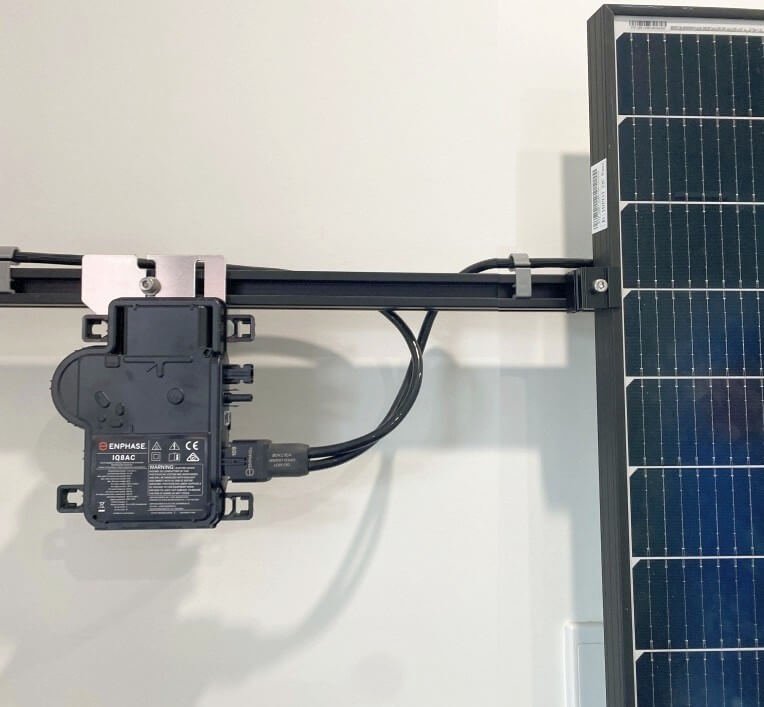Why We Love Microinverters: They’re Safe, Resilient, and Beautiful!

In September 2017, a storm grew from a tropical wave near Cape Verde Islands and developed into a category 5 hurricane named Irma. It swept through northeastern Caribbean and Florida Keys taking 134 lives and causing $77B worth of damage. It was the most destructive hurricane to strike Continental United States since Katrina in 2005.
Then, two weeks later, Hurricane Maria struck and devastated the island of Puerto Rico. More than 3000 lives were lost, and the overall monetary losses were estimated to be upwards of $90B.
The Federal Emergency Management Agency (FEMA) was tasked with assessing the preparedness for such emergencies. They analyzed a range of measures that were already in place and made policy recommendations for future improvement. One of the key topics they focused on was electricity. When the hurricanes struck, they took out the power grids and put the power generating stations out of commission. Entire neighborhoods were plunged into darkness. There was no heating, no refrigeration, and perhaps most importantly, no way to communicate in time of crisis.
The hurricanes brought into sharp focus the need for alternative, grid-independent sources of power such as solar. Homes with solar were more resilient and in a manner of speaking, protected in the aftermath. But what FEMA discovered was that not all solar installations are alike. The hurricanes wrecked roofs and often panels blew off. In its recommendation first issued in April 2018 and revised in August 2018 (Rooftop Solar Panel Attachment: Design, Installation, and Maintenance) they issued code guidance and recommended best practices for design, installation and maintenance of rooftop solar panels.
Among other things such as how to fasten solar panels to the roof correctly, what FEMA observed was that using Microinverters instead of String or Central inverters ensured that systems have a greater chance of allowing undamaged panels to generate electricity even if some panels are blown away or damaged by wind-borne debris. Having an electric connection that can run even when the grid is down was also recommended, which Microinverters are designed for.

Today, Microinverters designed and sold by Enphase Energy are the most popular inverter technology in the United States. They are safer, smarter, more reliable, and in our opinion, beautifully designed.
There are plenty of reasons why more and more Americans are using Microinverters – here are a few, important ones:
- Designed For Safety: Microinverters are mounted directly on each solar panel and convert the electrical current at the source of creation, whereas a string inverter is mounted on your house and converts the electrical currents from all the solar panels in one central location. The cables that run from your panels to your home are AC (alternating current) in the case of Microinverters – safe and reliable whereas in the case of string inverters, the power from the panels is brought down to the inverter with a high tension DC cable which is at a higher risk of catching fire.
- Reliable: Because Micros (we like abbreviations!) sit behind each panel, even if one of them malfunctions, you still get power from all the other panels. If a string inverter shuts down, the whole installation stops producing.
- Built to Last: Microinverters come with a 25-year warranty – same as the panels. String inverters are warrantied for 10 to 12 years.
- Smart: Because Microinverters can maximize the power production from each panel, they are far more effective in case of shading or complex roofs. In addition, they are software controlled which means they can be upgraded ‘over the air’ to ensure you always have the latest and greatest solar production capabilities.
Also, like we keep telling each other around the office, they just look cool! Check this IQ8 Micro from Enphase which works rain or shine and whether the grid is on or off:

Have we convinced you yet? No? It’s always best to speak to an installer local to your area to find out what works best for you. They know the electricity codes in your area, the state regulations, the fire safety rules etc. And they are community partners who are available round the clock for their prized customers. If you’d like to speak to one, click here and we will get you going.
